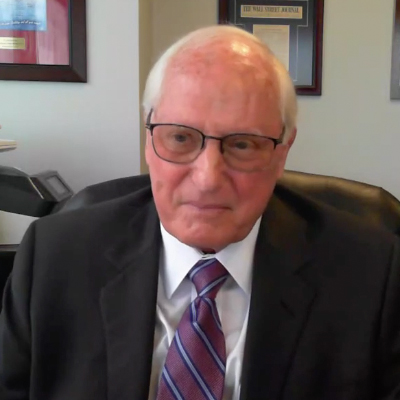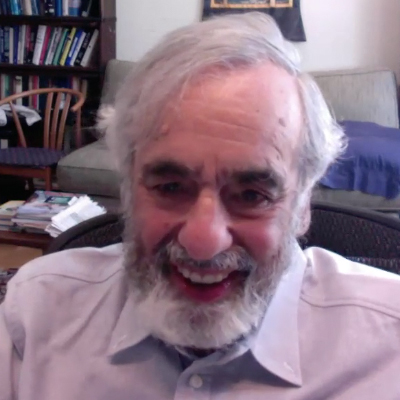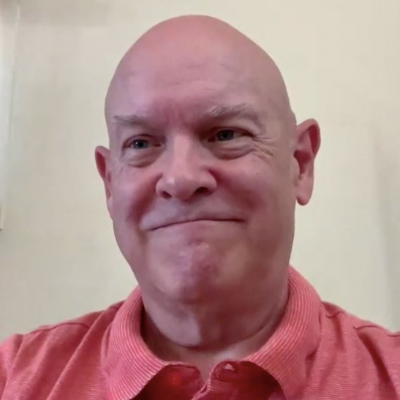An Industry Transformed
Reaching Beyond the Industry
Pandemic risk is one of several exposures that have insurers looking outside of the industry for coverage.
- Lee McDonald
- September 2020
-





Mounting losses from pandemic-related shutdowns and business interruptions dwarf the collective capacity of private insurance markets. Worse yet, they are in the vanguard of emerging risks that might represent even larger potential losses.
In a panel gathered by Best's Review and AMBestTV, industry leaders discussed the issues involved with building tomorrow's larger-scale risk solutions.
Panelists
Barry Gilway, Citizens Property Insurance
Tim Richison, California Earthquake Authority (formerly)
Howard Kunreuther, University of Pennsylvania
At the state level, Florida and California have been at the forefront of tackling large-scale risk, creating both Citizens Property Insurance Corp. and the California Earthquake Authority to backstop catastrophic property loss.
Setting up the next Citizens- or CEA-like organizations to address new catastrophic risks won't be simple, said professor Howard Kunreuther, co-director of the Wharton Risk Management and Decision Processes Center at the University of Pennsylvania.
“There's no question that these risks are becoming more and more challenging for the insurance industry to a large extent because the damages are greater,” said Kunreuther, who has written extensively on risk decision-making and how organizations approach catastrophic risk. Wildfire risk, he said, is a potential risk that would require last-resort coverage.

Barry Gilway
Citizens Property Insurance
“On the pandemic, this has raised some very challenging issues for the country and certainly for the insurance industry because of business interruption,” Kunreuther said.
“A lot of people say the insurance industry should cover this,” Kunreuther said. “If there's one principle I think that we follow in our Risk Center it's that not only should premiums reflect the risk as best they can but also coverage that is excluded from a policy. The reinsurance industry should not be responsible.”
Building risk solutions that extend beyond the insurance industry means convincing, and often re-convincing, political leaders that the task is feasible and necessary.
“We have to understand how to communicate appropriately with public officials or public staff members exactly what the risk is,” said Tim Richison, who helped launch the California Earthquake Authority and served as its chief financial officer before retiring.
“That is all very, very foreign to them,” Richison said. “They don't understand the insurance aspect of it. They don't understand leveraging of capital, which is what we do when we package reinsurance or cat bonds or anything in the capital markets. If you're not familiar with something, you're very skeptical of that situation,” Richison said. “Then you have to spend a lot of time having discussions, showing them, taking baby steps.”
More than
1 Million
policies in force - California Earthquake Authority
Source: California Earthquake Authority website as of
August 6, 2020
“This is why it took us a long time in the CEA to get to the point where we get to the capital markets. I was unable to get across the benefit of going into the capital markets and what it would be financially for the CEA. It took a long time. Unfortunately you have a situation here, at least in California, where term limits are in place. Every four to eight years, depending upon which, you've got a whole new body of individuals that you must now start all over again.”
The dividing line between insurers and political leaders is how each views risk. Insurers embrace it, political leaders shun it.
“It gets down to Insurance 101,” Richison said. “Is there a risk involved? Yes, there is a risk involved with anything that you do. They would love it to be 100% guaranteed no risks are involved, especially on how they deal with things. As we all know, that's just not the case. But for political staffers and politicians, that's what they strive for: Is it 100% risk free?”
One vulnerability of long-term larger-scale risk solutions is that they are, in fact, long-term. Many insureds will pay a lifetime of premiums without ever collecting on their policies.
“It's very, very hard to tell people that the best return on an insurance policy is no return at all,” Kunreuther said. “It's a really hard concept for people to understand. They think about it as an investment rather than a protective measure and they feel they've been cheated if they haven't had a loss and they're paying all these premiums.”

The question on the table with pandemics is it may very well be that there are an awful lot of people who would like to have pandemic insurance. It’s not at all clear exactly how insurers are going to feel about offering the kind of coverage that they may want.
Howard Kunreuther
University of Pennsylvania Risk Management and Decision Processes Center
Insurers can roughly predict when insureds' resolve to continue will weaken, Richison said.
“People have admitted they may take it four or five years,” Richison said. “Then we found people not taking it any more because there's not an earthquake occurring, or there's been no news or anything coming from the scientific community saying that, 'Oh, there's a possible earthquake coming in the next 10 years, 20 years, 30 years,'” he said.
“People would cancel the policies. You had a high fluctuation of cancellation rates coming in after about five, six, seven years, the sixth-year itch you get. Then they decide the investment's not paying off and they cancel. It's very, very difficult to get people to see that it's a long-term situation for these things that don't happen very often, such as earthquake.”
Social Inflation
The lack of visible returns is a factor in the growing problem of “social inflation,” evidenced as some counties in Florida experienced a sharp spike in insurance claims and litigation in recent years, said Barry Gilway, president, chief executive and executive director of Citizens Property Insurance Corp., a tax-exempt, nonprofit entity formed in 2002.
“Social inflation, lots of people would define it lots of different ways, but the reality is, people want their returns earlier. They want to put in their claim,” Gilway said.
“Tri-county is infamous in Florida,” Gilway said, referring to the southern Florida region around Palm Beach, Broward, and Miami-Dade counties. “The litigation rate in the tri-county [region] is 700% of the litigation rate outside of tri-county. It's staggering and I've been in the business for 50 years. Instead of expecting maybe 3% or 4% of your policyholders to put in claims, 20% of your policyholders put in claims because they want the returns earlier. They want an immediate return.”
Public-private insurance systems face the dual pressures of keeping rates low while providing sufficient coverage, Gilway said.
“Within the Florida statutes, seven times affordability is mentioned in statute. We're required to provide comparable coverage by the statute but they keep referring to affordability. As you know and I know, affordability is very relative,” Gilway said.
“Once you establish an overall mechanism that substantially reduces the overall cost inappropriately and doesn't cover the risk, then you really have insurers and reinsurers just simply not applying their capital,” Gilway said. “It's a very, very difficult situation. Overwhelming losses and insurer reluctance can leave political leaders with little choice but to consider larger-scale solutions.”

Right now, a lot of these public-private partnerships are just at the state level. I see what we just described as a pandemic situation as being just as much as this is a risk anywhere in the United States.
Tim Richison
Formerly with California Earthquake Authority
Coverage Affordability
While business owners might be interested in pandemic coverage, affordability could be a problem.
“The question on the table with pandemics is it may very well be that there are an awful lot of people who would like to have pandemic insurance. It's not at all clear exactly how insurers are going to feel about offering the kind of coverage that they may want,” Kunreuther said.
“Small businesses in particular have a problem,” Kunreuther said. “That comes back to the affordability issue. What are they going to have to pay for business interruption if a private company is going to offer them business interruption with the challenges that they would face?”
A potential risk of organizations such as Citizens Property Insurance or the National Flood Insurance Program, which operate alongside the private market, is that insurers will select only the most profitable customers and leave the most severe risks to the insurers of last resort.
“At the end of the day, what do you end up with? You end up with an issue of how do you price the residual risks? We want to get rid of the exposure,” Gilway said.
“The bottom line is, yes, cherry-picking absolutely occurs,” Gilway said. “That is what's happening right now with the National Flood Insurance Program. We all know that. The private insurers are coming in. They are cherry-picking the risk and the question is how do you finance the residual risk? That, to me, is the big issue,” he said.
“The numbers I'm seeing relative to what it would actually cost to reinsure and spread the risk associated with a full pandemic cover, [are] astronomical, given what has taken place,” Gilway said. “We may disagree on this, but we may well have come up with uninsurable risk. I used to say, 'anything could be insured at the right price, even a burning building.'”
More than
475,000
policies in force - Citizens Property Insurance Corp.
Source: Citizens Property Insurance Corp. website as of August 6, 2020
Given the type and scope of emerging risks, tomorrow's large-scale public-private risk arrangements could scale beyond states or regions. “Right now, a lot of these public-private partnerships are just at the state level. I see what we just described as a pandemic situation as being just as much, as this is a risk anywhere in the United States,” Richison said.
“That is much more, I think, where there might be a federal-private partnership come into play for some of these very large and maybe uninsurable risks involved,” Richison said.
“The bottom line is, there's got to be a way to deal with it,” Gilway said. “The issue that I see, particularly when you get into discussions of global warming and sea level rise, and the long-term impacts, and what you're trying to insure against, is you're going to need every ounce of capital and capacity behind this that you can possibly get,” Gilway said.
“If that is state-level capital, federal capital, reinsurance transfer through whatever mechanisms designed, we're going to need it,” he said. “I can't even imagine the implications of a massive cyberattack on the United States and the business interruption associated with cyber. It's staggering when you start thinking about it.
“But that's the risk that is coming.”